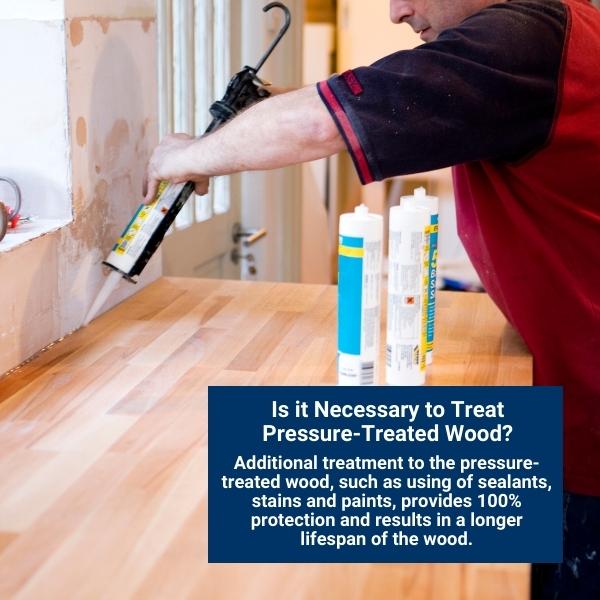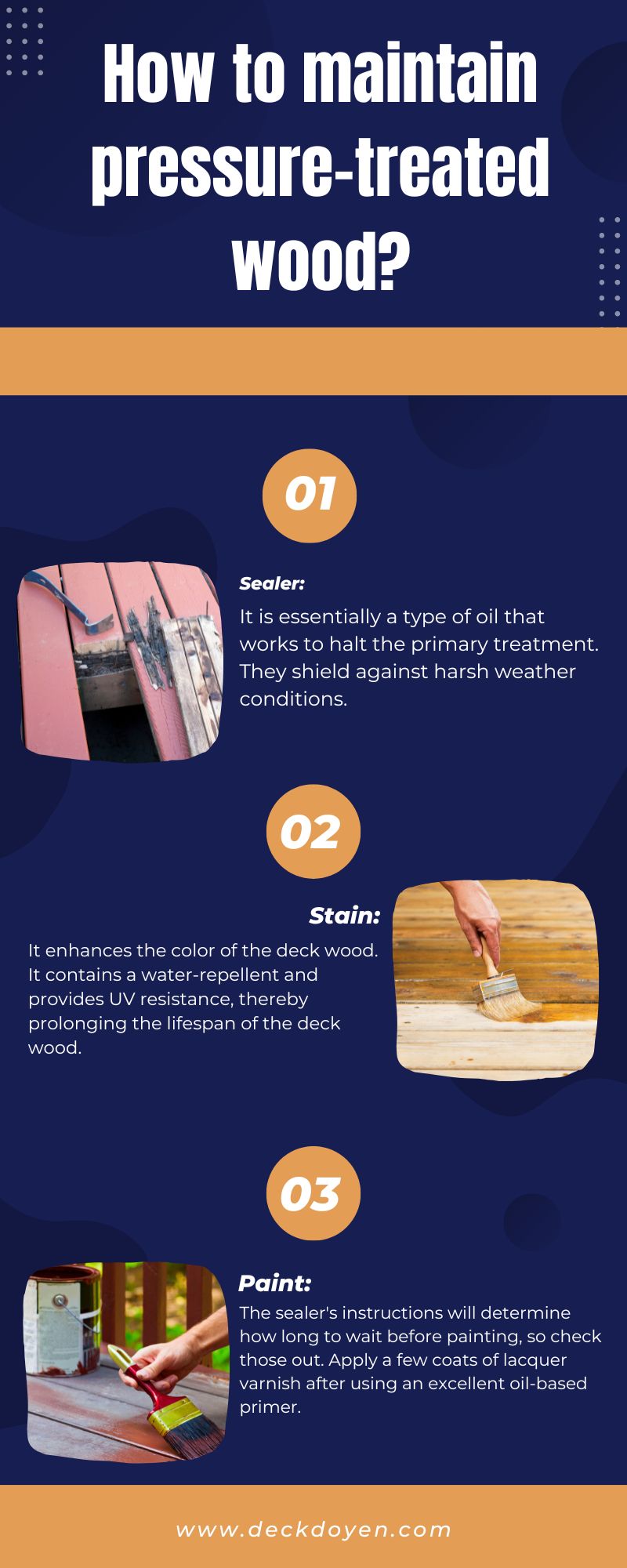Pressure-treated wood can be protected from rot and perform better for extended periods of time using different treatments. Considering that it has this built-in security, many homeowners are not aware of what type of treatments will suit best for pressure-treated wood.
All pressure-treated wood surfaces must be sealed after construction is complete. Staining and painting also protect the wood and prevent cracking and splitting as the season changes. With these helpful suggestions, you may enhance your deck, fence, or any other structure and use it for many seasons to come.
So, if you are looking forward to providing pressure-treated wood flexible and straight outlook, you must opt for the best treatments and follow the required conditions as provided in this guide.
Is It Necessary To Treat Pressure-Treated Wood?
You might be asking why on earth you would be required to do anything additional to the lumber given that you already spent a little extra on pressure-treated wood, intended to serve you for a long time and be durable. You must keep in mind that while pressure treatment prevents rot from being wet, it does not shield the wood from weathering (which does not always entail dampness!)
Also Read: Deck Blocks Vs Concrete Footings: Which One Is Best?
The truth is that even pressure-treated wood will split or warp if it is not properly maintained, and the additional money you have spent to acquire wood will be completely ineffective.

Therefore, a sealer offers the best protection to pressure-treated wood, so you should apply it as soon as possible and then reapply it once a year. Go for sealers with Sun Protection since they will help to protect your deck wood from the sun. After that, you should give your pressure-treated wood about a month to fully cure before staining it to ensure that it is entirely dry. Finally, you can paint your wood if you desire. Prior to painting, a sealer must be applied. Utilize a top-notch oil-based primer before adding many coats of lacquer varnish.
What Are My Options In This Situation?
Stains, sealants, and paints are your basic options for maintaining pressure-treated wood. Although oiling wood is OK and will give it a glossy sheen, it does not imply you may skip the preservative procedure. Any preservative, including paint, sealer, and stains, will slow the drying process, keeping your wood flexible and straight.
Here is a breakdown of those three options, along with all the information you require:
- Sealer: Sealer is essentially a type of oil that works to halt the primary treatment. Even though wood has already been treated when it leaves the plant, those chemicals will continue to work on the wood until it has dried completely up. The best amount of protection is provided by a sealer, which you should apply as early as you can and then reapply once per year. Prefer sealers that have protection from the sun since they will aid in shielding your deck wood from the sun!

- Stain: Stains, as opposed to sealers, physically color the wood to which they are applied. You can utilize either latex or oil stains; they are the two types available. A decent stain should also contain a water-repellent and more UV resistance, thereby prolonging the lifespan of your deck wood even further. To guarantee that your pressure-treated timber is completely dry, you should wait about a month after purchase before staining it because stain can only be applied to dry wood.
- Paint: Finally, if you would like, you can paint your wood. It is essential to use a sealant first before painting. The sealer’s instructions should tell you how long to wait before painting, so check those out. Apply a few coats of lacquer varnish after using an excellent oil-based primer.
Should I Treat My Pressure-Treated Wood With Preservatives?
Some people in the industry advise against painting pressure-treated wood at all because, if you don’t do it properly, you risk trapping moisture that will cause the paint to flake off. Many other people, however, have successfully stained or painted their wood.
You should not need to apply another preservative layer because most of the pressure-treated wood won’t require treating for ten or twenty years. The rot and decay resistance of most of our pressure-treated sheds is assured for 15 years without the need for re-treating. If you choose to treat or paint your pressure-treated deck wood, make sure the coating is meant to be used with pressure-treated wood.

Wrap Up!
Rot is among the most problematic issues with wood. Natural wood will not last more than a year or two; if you are unfortunate, it might even last even less before it begins its terrible rot journey. People now pressure-treat wood in an effort to avoid this! But if it is not sheltered below or if the grade is chosen incorrectly, pressure-treated wood may likewise rot in a few years. The synthetic preservative enhances its tolerance to germs, insects, and mildew, but this does not endure forever.
Also Read: Should You Install Deck Posts In Concrete Or On Top?
Use a top-notch wood preservative or sealer to stop pressure-treated wood from rotting. Applying stains, paints, and sealants will shield your treated wood from elements that lead to degradation, such as moisture and Ultraviolet radiation. Make absolutely sure that the pressure-treated wood is sufficiently dry before applying any treatments.
FAQs
Should You Wait Before Painting Or Fixing Your Pressure-Treated Wood?
Pressure-treated wood must be allowed to mature before any type of treatment or painting is even considered. This is because there might still be treatment residue there. Regardless of whether it does, any treatment option or pigment will not stick to this residue and will instead be removed along with the residue. Pressure-treated wood should be left alone for at minimum two to three months before receiving any treatment. You must also be certain that the wood is completely dry.
What Happens When You Don’t Stain Pressure-Treated Wood?
If you don’t stain the pressure-treated wood, it will swell and shrink until it gets dried. It is because pressure-treated wood has a porous surface that is prone to penetration of fluids. Thus, staining also helps in the protection of the wood.

